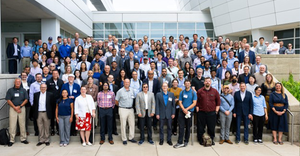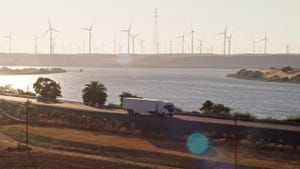How Hydroleap Tackles Tough Industrial Wastewaters
Singapore-based Hydroleap is one tech company with another idea it’s pitching to industries working to stay on top of their wastewater— two relatively low-energy-consuming electrochemical processes that require adding no chemicals. Founded in 2016, the company has raised $7.7 million from institutional investors.

When you think of industrial wastewater you typically think of, well, waste—dirty, nasty liquid that needs to be safely and responsibly disposed of to meet discharge limits. Staying compliant is a complex, expensive job. And now, as companies adopt ESG goals, more of them are looking to do more than comply; they’re looking to taper their carbon footprint and even to turn their wastewater into a resource.
It typically means looking beyond conventional methods, as conventional technologies leverage chemicals to react with contaminants that generate secondary waste. Plus, they are pretty low-efficiency, energy-intensive processes.
Singapore-based Hydroleap is one tech company with another idea it’s pitching to industries working to stay on top of their wastewater— two relatively low-energy-consuming electrochemical processes that require adding no chemicals.
One of them, electrocoagulation, goes after oil, grease, and suspended solids, which Hydroleap sells mainly to food and beverage industries, though some other manufacturers are starting to buy in.
The other process, electrooxidation, works with not-as-tough contaminants, with two primary applications: cooling towers, improving the quality of recirculating water used to cool buildings, and use as a posttreatment for industrial wastewater.
“Electrical treatments have actually been around a while, but they have not been scaled because they consume high energy. On average competitors’ analyses show 2 to 4 kilowatts (kwh) per cubic meter,” says Mohammad Sherafatmand, CEO and founder, Hydroleap.
Depending on the process and job, the tech developer’s alternative process may require as low as .8 kwh.
An age-old issue is that electrodes, placed in the water corrode over time and to address this, conventional methods employ a protective layer to them, but it impairs electrical conduction, requiring more power.
“We have found a way to remove the layer on the electrodes, and that’s what separates us from others. We avoid formation of the layer by altering how the electrodes work to conduct electricity,” Sherafatmand says.
Besides the benefits of lower operating costs and chemical avoidance, the technology can be scaled if, when, and how much is needed, as the systems are modular.
Customers are medium- to large-sized corporates such as blue-chip companies and food processing manufacturers with treatment needs of about 500 to 1,000 cubic meters (m3) a day.
“As a technology company, we have done our fair bit of try and error in finding product/market fit and finding the industries that can benefit the most from our technology,” Sherafatmand says.
Hydroleap started out in the construction market treating suspended solids but soon realized that the technologies’ capabilities went beyond handling suspended solids; the small team moved into industries that generate more difficult wastewater.
With a market concentration in Singapore, the Philippines, Indonesia, and Thailand, the fairly young company has eight projects in the pipeline for 2023.
Its two processes, electrocoagulation and electrooxidation, are similar in principle. They both entail applying low levels of electricity to electrodes. But with electrocoagulation cathodes become oxidized, ultimately generating aluminum hydroxide, which separates contaminants. The process also generates a natural gas that helps float sludge.
It not only treats suspended solids, oil, and grease, but organics and heavy metals. While most of the early customers tapping into electrocoagulation are in the food and beverage industries, Sherafatmand says it works for textiles, automotive, and other industries whose waters contain high oil and grease content.
Electrooxidation works by generating an intensely strong form of chlorine that actually breaks down contamination in water. He compares the process to adding chlorine to a swimming pool for disinfection.
Sherafatmand points to a couple of customer scenarios showing outcomes: a food and beverage manufacturer who reduced suspended solids, chemical oxygen demand, and phosphate more than 96 percent, 65 percent, and 95 percent, respectively, while lowering energy consumption by more than 40 percent for the downstream process.
A data center customer reduced its water discharges by 70 percent while shaving chemical consumption by 80 percent.
Hydroleap has had a little help from Imagine H20 Asia, a Singapore-headquartered accelerator that partners with global entrepreneurs to build and scale wastewater treatment technologies.
The operation helps startups identify and secure pilot opportunities to ultimately set them on the way to securing their first commercial contracts.
Getting that first one, particularly for solutions with high hardware/CAPEX costs is always a hurdle, says Nimesh Modak, managing director of Imagine H2O Asia.
“Since the wastewater treatment field is diverse, I would say one of the biggest challenges for emerging technologies is getting the right opportunities at the right time for commercial/technology de-risking.
“All the startups in our program share common features–a deep understanding of their customer(s); evidence of a novel technology and/or business model that can have an outsized impact on water resource management if scaled; and a team, advisors and/or staffing plan that can execute.”
Hydroleap checked all those boxes, Modak says.
“They were solving a real problem - handling difficult to treat wastewaters with less chemicals and energy, originally focusing on one or two segments, now broadening as they grow.”
Their solution is differentiated, he says, “from low power consumption to the smart automation features that allow fast response to changing water quality parameters.
“And Moh and his team demonstrated the right balance of technology/engineering prowess and business acumen needed to get to where they are today – securing funding to grow and unlocking new value propositions across more sectors.”
Hydroleap, founded in 2016, has raised $7.7 million from institutional investors including Real Tech Holdings, SEEDS Capital, Wavemaker Group, 500 Global, SGInnovate and plans to announce more strategic investors soon.
Says Sherafatmand: “With the recent fundraising, we can now expand our manufacturing and execution capabilities to address more customers, especially in Southeast Asia and Oceania. We are also searching for local partners/customers in other regions to expedite our market penetration.”
About the Author
You May Also Like




